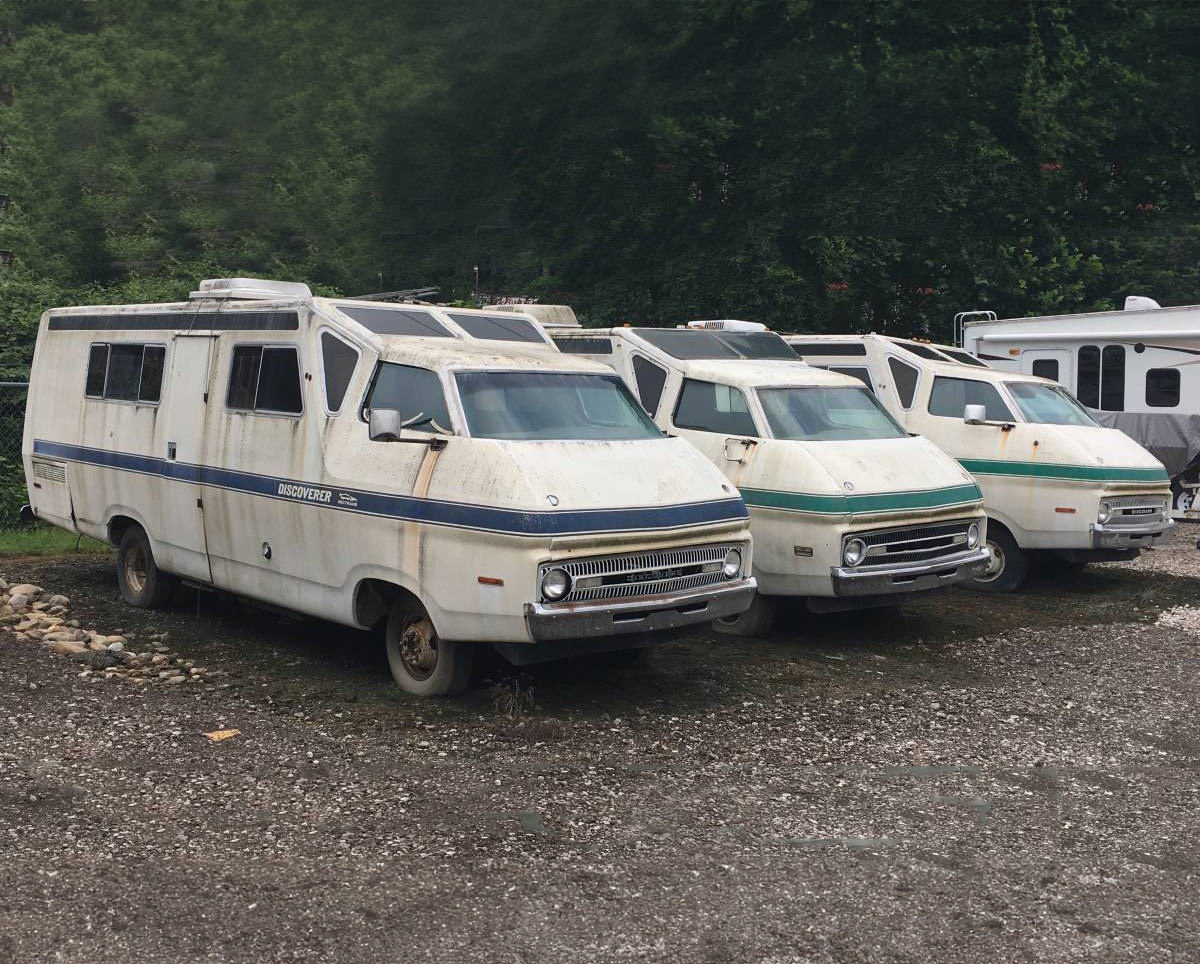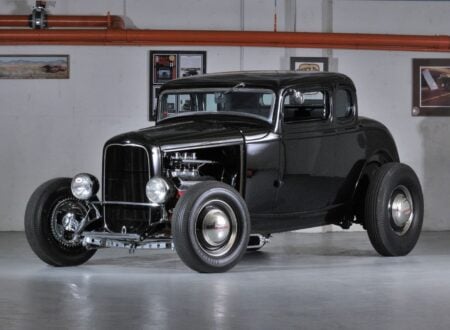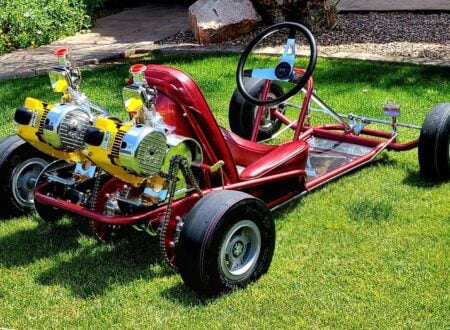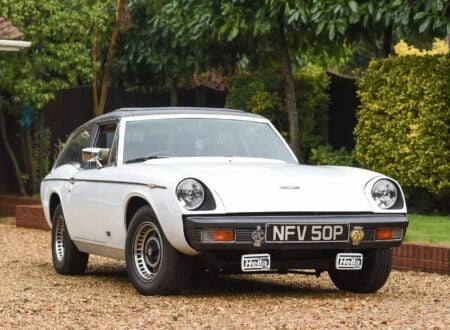This unusual listing consists of three similar 1970s-era Rectrans Discoverer 25 motorhomes, all of which are in various states of disrepair and being offered for sale out of Monaca, Pennsylvania on Facebook Marketplace.
The Rectrans Discoverer is a motorhome with a truly fascinating history, it was designed by none other than Larry Shinoda, the man behind the C2 and C3 Corvette, the Boss 302 Mustang, the Jeep Grand Cherokee (ZJ), the Ford Torino King Cobra, and countless other Detroit high-water marks.
Fast Facts – The Rectrans Discoverer 25
- The Rectrans Discoverer 25 motorhome was designed by Larry Shinoda, renowned for his work on iconic vehicles like the C2 and C3 Corvette and the Boss 302 Mustang. Developed in collaboration with Bunkie Knudsen, former President of Ford, the Discoverer was part of their venture after leaving Ford to create state-of-the-art recreational vehicles.
- The Discoverer 25, conceived under their company named Rectrans (a blend of “recreational transportation”), featured advanced design for the time, notably it was the first RV subject to wind tunnel testing to optimize aerodynamic performance.
- Introduced in the early 1970s, the Rectrans Discoverer aimed for high fuel efficiency and performance during a period dominated by large, inefficient engines. Achieving more than 10 miles per gallon and capable of accelerating from 0 to 60 mph in 11 seconds, the Discoverer was revolutionary. It was built on a Dodge M-300 truck frame, powered by a 413 cubic inch Chrysler RB V8 engine.
- Between 1971 and 1974, approximately 3,300 examples of the Rectrans Discoverer 25 were manufactured.
- The article spotlights a listing of three Rectrans Discoverer 25 motorhomes for sale in Monaca, Pennsylvania. Initially priced at $7,000 in 2019, the price has since dropped to $1,500 due to their condition. These vehicles are not drivable and require transportation for restoration.
Knudsen + Shinoda Get To Work
Larry Shinoda designed the Rectrans Discoverer working with Bunkie Knudsen, the former President of the Ford Motor Co. This two-man dream team would come up with one of the most innovative motorhomes the world had ever seen, and leave an indelible mark on the RV industry.
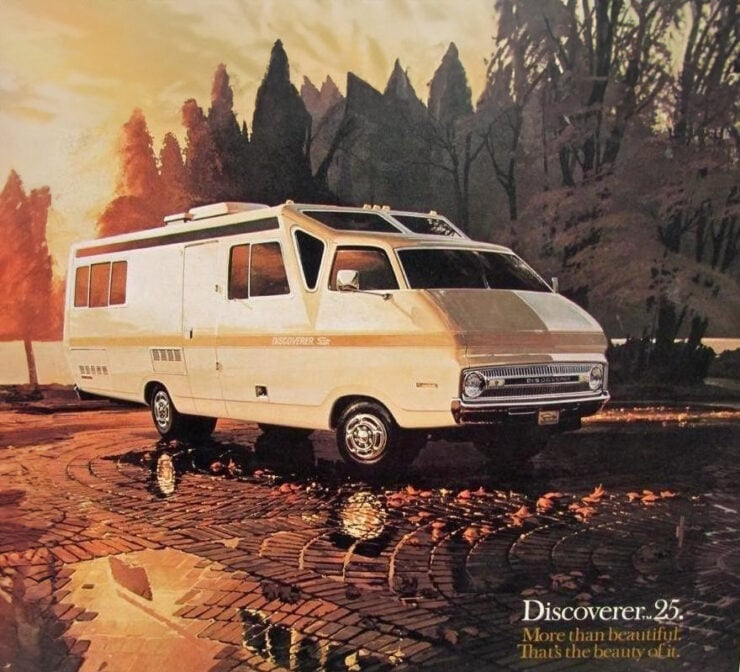

The two men had been colleagues at Ford, with Shinoda designing the Boss 302 Mustang directly under Knudsen – in fact that’s how the car got its name – it was a secret project so whenever someone asked what he was working on he would just smile and say “the Boss’s car.” The prototype then went on to be called the Boss 302 when it entered production.
Knudsen had left Ford in 1969 after a period of significant infighting, and Shinoda went with him. The two men co-founded Rectrans in November of 1970 with the goal of building state-of-the-art RVs in Brighton, Michigan.
The company name Rectrans was a portmanteau of “recreational transportation,” and the plan was for Knudsen and Shinoda to bring the technology and design know-how of a Big Three American automaker into the motorhome space for the first time. This was shortly before the GMC Motorhome, and in some ways it seems likely that the GM offering may have been influenced by the earlier Rectrans.
An (Almost) Impossible Goal
One of the key targets for the Rectrans Discoverer was to achieve a minimum of 10 mpg under normal driving conditions. This may not seem great today, but back in 1970 dealing with big block gasoline V8s topped with carburetors it was to be a significant challenge.
Shinoda approached the design from a function-first angle, creating 1:25 scale models and wind tunnel testing them to optimize the shape. This was apparently a first in the history of RVs. The final design does look a little unusual it must be said, but Shinoda achieved his goal – the vehicle was capable of slightly better than 10 mpg and it could do the 0 – 60 mph dash in just 11 seconds, quite revolutionary for the time.
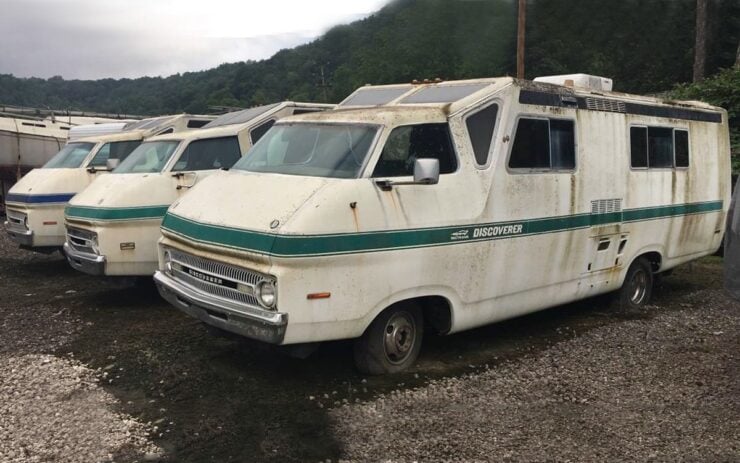

The final 25ft long body design was then formed from fiberglass and mounted to a Dodge M-300 heavy-duty truck frame. Power was provided by a 413 cubic inch Chrysler RB big block V8 which was good for 375 bhp and 495 lb ft of torque, enough to comfortably get the 10,000 lb vehicle up to highway speeds.
Between 1971 and 1974 it’s believed that 3,300 examples of the Rectrans Discoverer 25 were built, with some minor variation over the model years. If anything, the company was too early, with the RV market skyrocketing as the 1970s continued and essentially all new designs being extensively wind tunnel tested and optimized for fuel efficiency and performance.
Surviving examples of the Rectrans Discoverer 25, of which there seem to be plenty thanks to the rust-free fiberglass bodies, are now sought after by vintage RV enthusiasts.
The Three Rectrans Discoverer 25s Shown Here
As mentioned in the introduction, this lot consists of three Rectrans Discoverer 25s that have been sitting in a field (or a lot) for quite some time. We know they’ve been for sale on various platforms since at least 2019, with the original price of $7,000 USD which has now come down to $1,500 USD.


The seller notes that, as the images imply, none of these motorhomes are drivable. As a result all will need to be removed by truck and taken to their final destination – where they will hopefully be restored and put back on the road.
If you’d like to read more about these three Rectrans Discoverer 25s or enquire about buying them, you can visit the listing here.
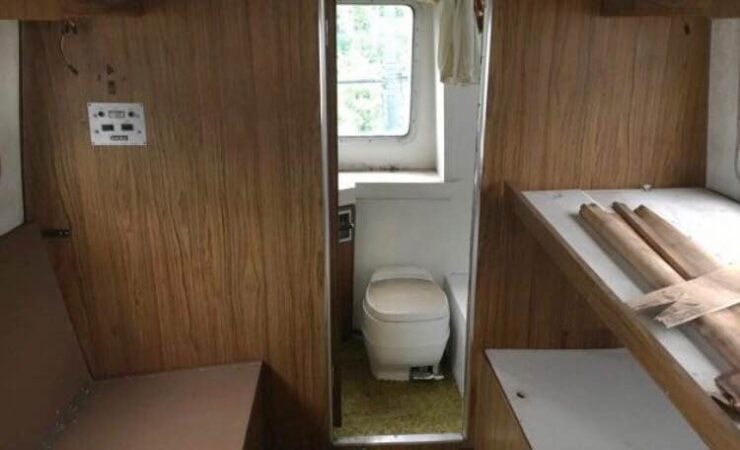
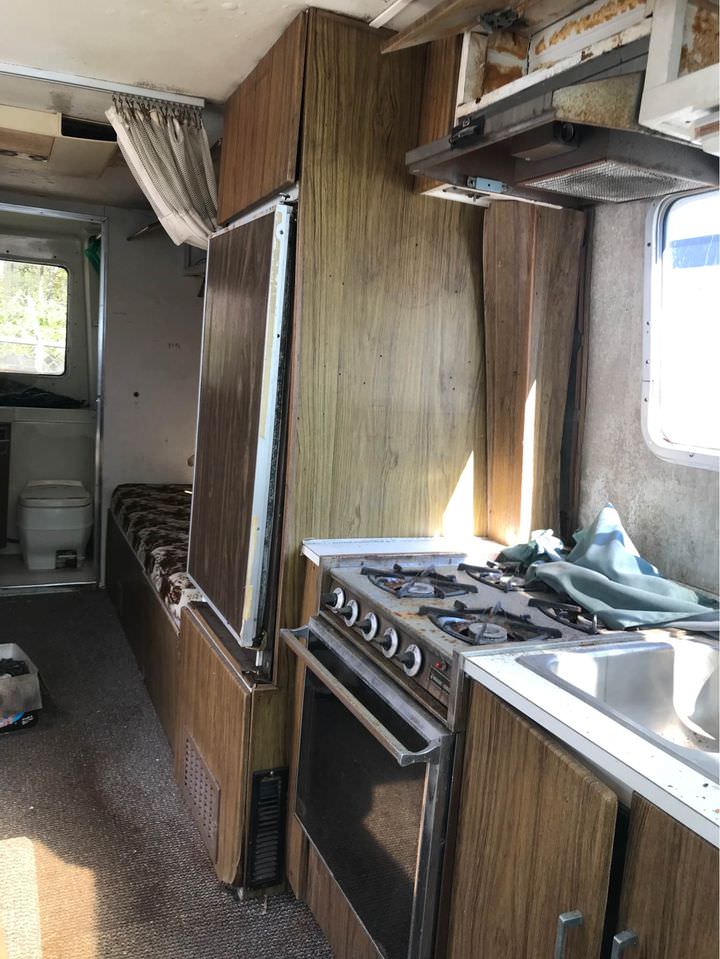
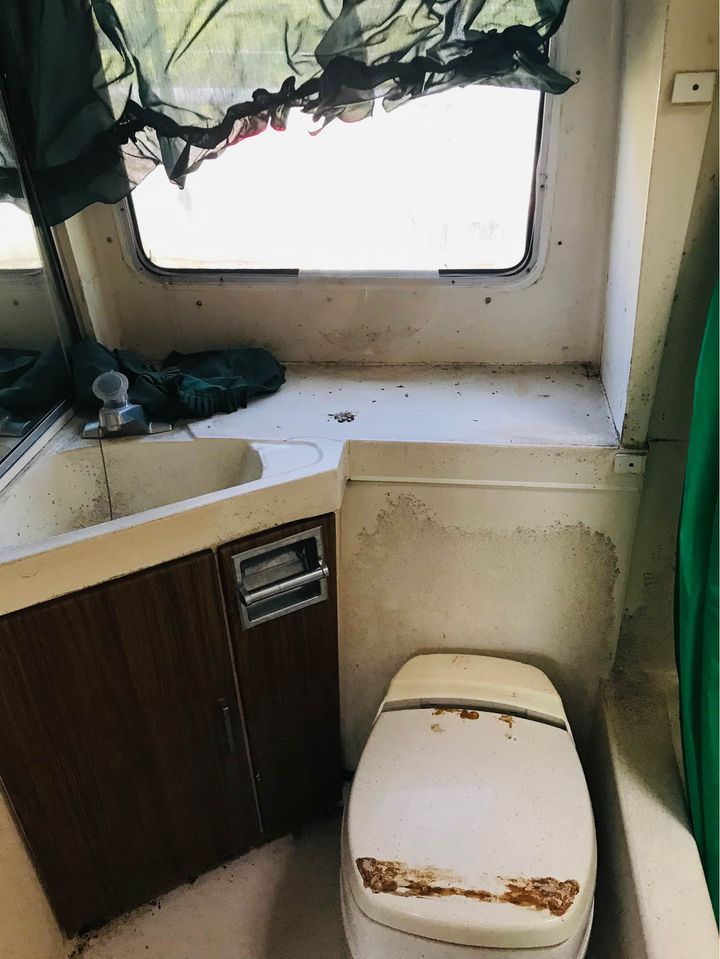

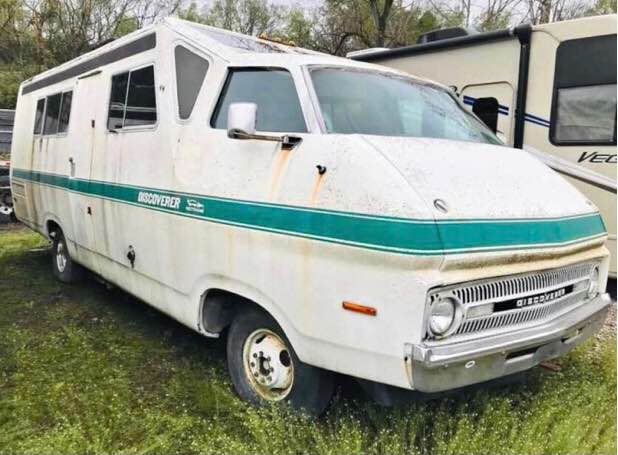
Images courtesy of Facebook Marketplace.

